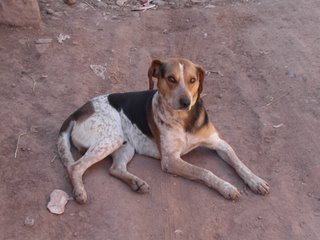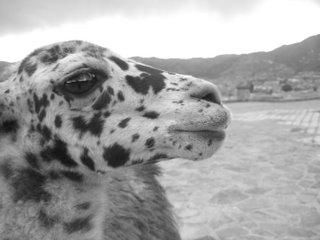


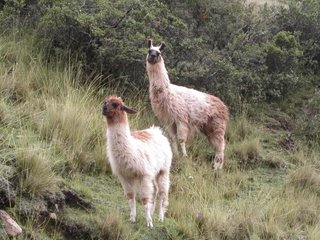



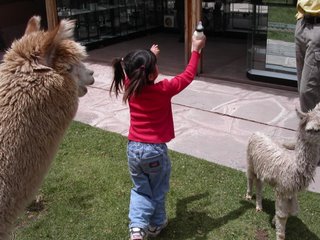
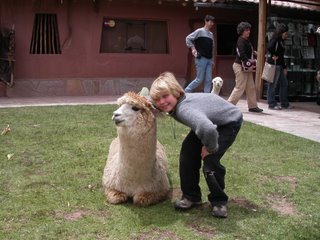

What would a trip to Peru be like without a few words on that most wonderful of cameloids, the llama. No horse by committee here, the llama needs no excuses. They’ve got a level of charm suitable to their disposition and just the right amount of fluffy fur for their size which, like Goldilocks, is neither too big nor too small. Llamas, in short, are cuddly and stately, furry and hip. Llamas are wooly but fashionably so; not so much cute as charismatic and cool; Jack Kerouac crossed with a koala to the advantage of each.
Llamas are willing to leave the fast pace vibrancy of the lower elevations to those who can’t handle the laid-back groove of the Andean Tropics. Llamas prefer the alta plana, high above the tree line, drinking the cool sweet water of the glacier runoff above the herd, before it’s sullied on it’s long descent to the Amazon. Only a cretin would accuse a llama of being standoffish. Llamas just have that laid-back groove. Like birds of prey, llamas know the score and behave accordingly; they are the ultimate high altitude hipsters. Llamas, no doubt, prefer the funk-jazz of the '60s – Miles Davis, Chet Baker, Grant Green – to the '80s American pop so oddly but widely popular in the bars and restaurants of Cusco. While llamas don’t have the chops for the sax or the digits for the keyboard, they do hum, I’ve heard them. (Perhaps they’re all potential Bessie Smith’s but just don’t know the words?). I have also heard them scream which can be a bit disconcerting when you're all alone at 13,000' on the alta plana and miles from the trailhead. Don't get me wrong, llamas don’t squeal like pre-pubescent girls when confronted with attractive boys, crashing waves, horses, or any other large thing they are fascinated by but over which they have little direct control, the scream of the wild and wily llama is kind of a cross between the shriek of a horror movie B-actress who's about to be skewered by her misogynistic stalker and theeerie sound of a loon on a lonely North Woods lake (waterfowl with chain saws?). Llamas are charismatic; they’re intelligent and curious, not skittish and flighty. One can’t imagine a llama yapping like a high-strung over-bred Shi Tzu who pees on the floor every time the doorbell rings assuming, of course, that llamas had doorbells.
As far as appearance goes, they exhibit a variety derived from a common mold: shaggier or scoobier, darker or lighter, solid or spotted. Although taste is an individual matter, I’m certain you would agree that the spotted ones are the most attractive. At times, older Quechuan women will doll up one of the more eye-catching llamas – I particularly like the red-tasseled yarn earings – and bring them into town for the amusement (and tips) of shutter-bug tourists. Rather than being degraded by their plight, like the burros in Tijuana painted in stripes so as to resemble zebras, the llamas, while looking slightly out of place outside of their natural environment, adopt the attitude that such crass commercialism is simply beneath them. Rather than balk or otherwise comment on their position, they simply ignore their indignities rather than acknowledge them and give them a reality of their own. It's sort of like how once you answer to the nickname, you’re stuck with it; llamas are just too smart to play that game
Theirs is not just form, but also function. They can haul loads of up to 100 pounds, their fur makes beautiful textiles, their dried dung can be used for fuel, they don’t degrade the plants and soils like the newer European imports, and they’re quite tasty! The llama is closely related to the Alpaca, which is slightly furrier on the hoof and more flavorful on the plate, and more distantly related the long-necked vicuna whose fur is even softer fur and more valuable as they are less prone to domestication.
Then there’s the spit issue. As civilized people, and thanks to the ability to simply flush away any evidence to the contrary, we humans like to pretend we’re not really animals and we certainly, therefore, don’t spit. We’ve come to think of spitting on each other as degrading and much more likely to escalate a conflict rather than settle one but llamas harbor no similar misconceptions and, consequently, have settled on spitting as a reasonable, if not noble, way to settle a conflict. Hey, spit happens and it sure beats our more “civilized” ways of dealing with those we dislike such as torture, imprisonment, beating, gunplay, and nuclear warfare. To be fair, we were warned (while Zak was trying to sneak up on one) that, if threatened, a llama may respond by jumping on you. So, taking a page from the G.W. Bush playbook, Zak and I figured that, if given the opportunity, we would engage in a pre-emptive strike and jump on them before they could jump on us; alas we were never given the opportunity to put our plan into action.
For more information, follow the link below:
http://www.albinoblacksheep.com/flash/llama.php























